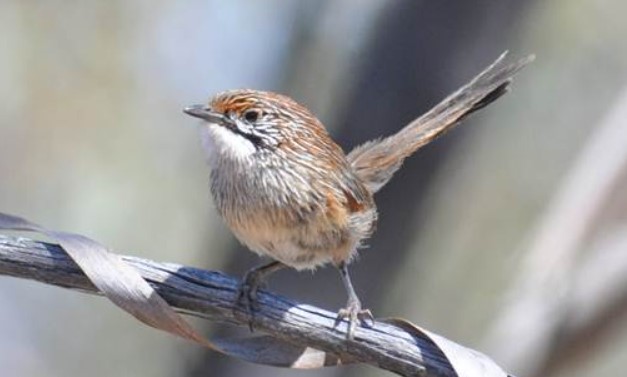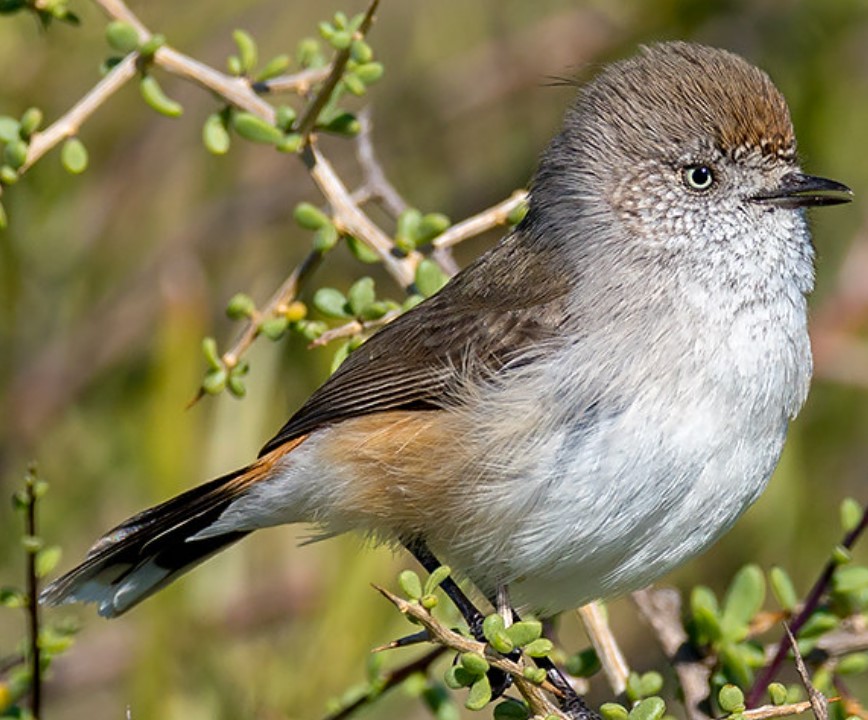There is an endemic species of the Pied Monarch (Arses kaupi) in coastal Queensland, Australia, which belongs to the monarch-flycatcher family, Monarchidae. Pied monarchs are conspicuous in their habitats due to their striking black and white plumage.
The species is found in coastal and lower-altitude rainforests in northeastern Queensland. It feeds constantly throughout the day, as it is a sedentary bird. Sometimes it wanders alone or in small groups, but usually in pairs. In the middle and upper forest strata, the bird spirals up and down around tree trunks and branches in search of food.

There are many flycatchers that work over tree trunks, including monarchs and fantail Rhipidura. However, the Pied Monarch is a specialist in this behavior, just like the Frilled Monarch. According to its superficial appearance, its feeding movements resemble those of a tree-creeper, Climacteric.
The Pied Monarch, however, flits rapidly over the trunk of a tree, flushing a range of insects from the bark, which it captures. Rather than probe crevices for hidden ants, the tree-creeper probes crevices for moths, flies, and beetles.
The bird hops repeatedly while holding its wings half open and jerking its tail downward repeatedly. Whenever an insect escapes, the monarch will fly out in pursuit and attempt to capture it in midair. As it flies, its tail fans like a fantail but moves more directly and with less fluttering.
Male Pied Monarchs often display their neck frills during group and sexual displays, but also occasionally during daily activities. A group of 4 to 5, or even sometimes 6, may involve disputes over territorial boundaries, for the members of the group usually stay in one area, flying back and forth and chasing one another in a ragged stream.
The birds usually disperse after about 20 minutes of such displays. Males dance around females between branchlets, raising and lowering their ruffs and buzzing constantly during courtship. Incubation, brooding, and feeding of the young are done by both sexes.
There are so many similarities between the Pied and Frilled Monarchs that they might be considered races of the same species. While there are signs of intergradation in Cook town, they may also meet there without interbreeding. Either way, the evidence is equivocal.

There are several alternative names for this species, including Australian pied flycatcher, Australian pied monarch, banded monarch, pied monarch-flycatcher, black-breasted flycatcher, Kaup’s flycatcher, and pied flycatcher. This bird measures between 140 and 160 millimeters long.
Male Pied Monarchs have glossy black heads surrounded by white erectile ruffs that join their white throats and are flecked faintly black. There is a broad grayish-white band across the lower back and scapulars of the wings, as well as across the tail coverts. A small black spot appears on the bird’s chin; the rest of its underparts are white, with a broad black band running across its breast. Brown eyes and cobalt-blue naked skin around the eyes Blue-grey is the color of the bill. The feet are slaty in color.
Female birds are black-and-white like male birds but duller. There is a brown tint on the wings, and the white collar is heavily flecked with black and separated from the throat by a black line down the sides of the neck.
Unlike adults, immature birds have dirty grey-brown and grey-white black and white areas. In the lower back band, the ruff is heavily freckled gray-black and white; the breast band is ill-defined gray-brown, washing onto the throat.
A Pied Monarch’s call consists of quacks and creaks during feeding and constant buzzing during non-feeding periods. Pied Monarchs’ song, however, is characterized by a series of short, soft, high whistles.
From October to January, nesting and breeding take place. The bird constructed a small nest out of the woven basket, which measures 60 x 45 mm on the outside and 40 x 45 mm on the inside. Nests are made of fine tendrils and twigs bound with cobwebs. Nests are decorated with lichen and fibers, especially near the rim, and lined with rootlets and shredded fibers. 2–10 m above the ground, it slung like a hammock between two vines, far away from any foliage.
It lays two eggs that are pale pink, slightly glossy, and flecked with red-browns and a faint purple-gray. Eggs have an oval shape with a size of about 19 x 14 mm. Both sexes are involved in the incubation process. Pied Monarchs are found from Cooktown to Ingham, Queensland, in lowland rainforests up to 700 meters and occasionally on the edges.







